What is a product - lecture PDF

| Title | What is a product - lecture |
|---|---|
| Course | Introductory Physiotherapy Practice |
| Institution | Curtin University |
| Pages | 4 |
| File Size | 78.4 KB |
| File Type | |
| Total Downloads | 112 |
| Total Views | 148 |
Summary
lecture...
Description
What is a product? Anything that can be offered to the market to satisfy a want or need. There must be some sort of value behind it In assignment first step is figuring out what need/want your product satisfies. Characteristics Complexity- The degree of difficulty around using the product ie, baby boomers and war babies will struggle with tech whereas millennials and gen z are very adaptable Compatibility- The degree to which the new product is consistent wuth existent values and product knowledge, past experience and current needs. Relative Advantage- The degree to which the new product is considered superior to existing productsthis is where masters failed, the consumer needs to know how your product will benefit them against existing products. Observability- The degree to which the benefits or other results of using the product can be observed by others abd communicated to target customers. Trialability.- The limit of which a product can be tried before purchasing. In this way brick and mortar stores are superior but convenience of online shopping and click and collect is beating out the trialability.
VARIATIONS OF PRODUCTS Product Item- A specific version of a product that can be designed as a distinct offering among organizations products. Coca Cola Product Line- A group of producst that are closely related but meet different needs and wants. Diet coke, coke zero, coke energy, vanilla coke. Product mix or product portfolio- All of the product lines a particular seller offers. Powerade, fanta. IMPORTANT FOR GA, explain evrythin Roogenic sells
Development Process 1. 2. 3. 4. 5. 6. 7.
New Product Strategy Idea Generation Idea Screening Business Analysis Development Test Marketing Commercialisation
Manipulating marketing and packaging. It must still align with the existing products and the company. If we are Roogenic, our resources being limited would it be worthwhile to sell in coles woolies and aldi?
Could lose authenticity, there is a lot of competition, coles takes 40% straight away, good visibility, helps broaden target audience say from women in their twenties to forties to anyone who shop tea. You need to think twice about the cost of getting them to stock it, it is important to look at both arguments. WHY BUILD A BRAND? 1. Identification 2. Repeat Sales 3. New Product Sales- new ends of the market, new needs. Toothpaste has broadened from just toothpaste to many product line extensions. If a new product hurts the original products the customers will defect. BRANDS MUST LISTEN TO CONUSMERS IT.
Repositioning Why? Changing Demographics, Declining Sales, Changes in Social Environment. Our customers change in age overtime and this means that their needs change. When our sales decline we need to figure out ways to bring our sales back such as chemist warehouse taking advantage during the covid 19 crisis. Brands are too concerned with developing their impressions rather than increasing their sales. Changing in values such as BLM, veganism, eco-friendliness, LGBT+, many companies jump on these band wagons but companies need to be careful as it isn’t possible to make 100% of the market happy WE MUST PICK OUT BATTLES. Types of Adopters Innovators Eager to try new products Have higher income Need hands on new products first Rely less on group norms Well educated and well informed Early Adopters Rely more on group norms Community oriented Likely to look as upon as brand leaders
Early Majority More objective Swell sales
Most people fit here
Late Majority Buy AFTER friends and family do Rely on word of mouth-want to make the right decision Sceptical, throuroigh, vritical
Laggards Lowest socioeconomic status Marketers rarely market towards them Stubborn Do not rely on group norms
Intro
Growth
Maturity
Decline
Where is the company in this life cycle and why? 60% of all producst don’t get past the indtroductory phase- so much money gets dumped here Growth is where a return on investment begins to be seen. Competitors begin to come around in the maturity phase so your sales begin to plato Introductory Stage
Full Stage launch
High costs Educating customers about the products Getting consumers to try the product Building awareness How much to manufacture (economics of sales) Sales are slow in this stage usually negative. You have to FIGHT. If you break even you are doing an amazing job
Growth Stage
If product survived the intro stage Sales start to increase Heavy consumer
MATURITY
Longest stage Cut throat competition Niche marketing Sales to stabilize Sometimes quality should be relied on
Decline stage
Determined by how rapidly consumer tastes changes or substitute products Start to eliminate non-essential expenses Product eventually withdrawn New ventures can be better than holding on to old....
Similar Free PDFs

What is a product - lecture
- 4 Pages
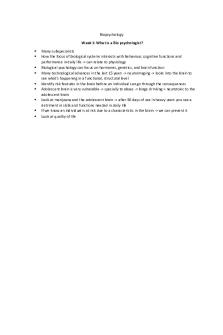
What is a Biopsychologist
- 1 Pages

Lecture 1: What Is Multilingualism?
- 25 Pages
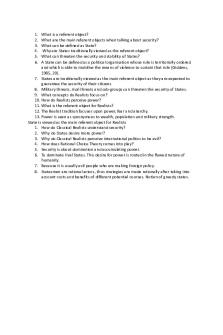
What is a referent object
- 1 Pages

What is a social fact
- 2 Pages

What is ABA - Grade: A
- 5 Pages

What is race - Grade: A
- 1 Pages
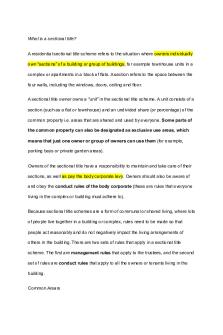
What is a sectional title
- 4 Pages

What is a summary judgement
- 5 Pages
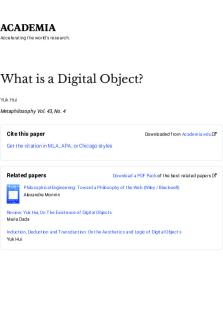
What is a Digital Object?
- 17 Pages

What is a ketogenic diet
- 2 Pages
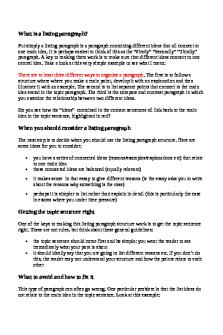
What is a listing paragraph
- 14 Pages

What is a Breadth Indicator
- 4 Pages
Popular Institutions
- Tinajero National High School - Annex
- Politeknik Caltex Riau
- Yokohama City University
- SGT University
- University of Al-Qadisiyah
- Divine Word College of Vigan
- Techniek College Rotterdam
- Universidade de Santiago
- Universiti Teknologi MARA Cawangan Johor Kampus Pasir Gudang
- Poltekkes Kemenkes Yogyakarta
- Baguio City National High School
- Colegio san marcos
- preparatoria uno
- Centro de Bachillerato Tecnológico Industrial y de Servicios No. 107
- Dalian Maritime University
- Quang Trung Secondary School
- Colegio Tecnológico en Informática
- Corporación Regional de Educación Superior
- Grupo CEDVA
- Dar Al Uloom University
- Centro de Estudios Preuniversitarios de la Universidad Nacional de Ingeniería
- 上智大学
- Aakash International School, Nuna Majara
- San Felipe Neri Catholic School
- Kang Chiao International School - New Taipei City
- Misamis Occidental National High School
- Institución Educativa Escuela Normal Juan Ladrilleros
- Kolehiyo ng Pantukan
- Batanes State College
- Instituto Continental
- Sekolah Menengah Kejuruan Kesehatan Kaltara (Tarakan)
- Colegio de La Inmaculada Concepcion - Cebu


